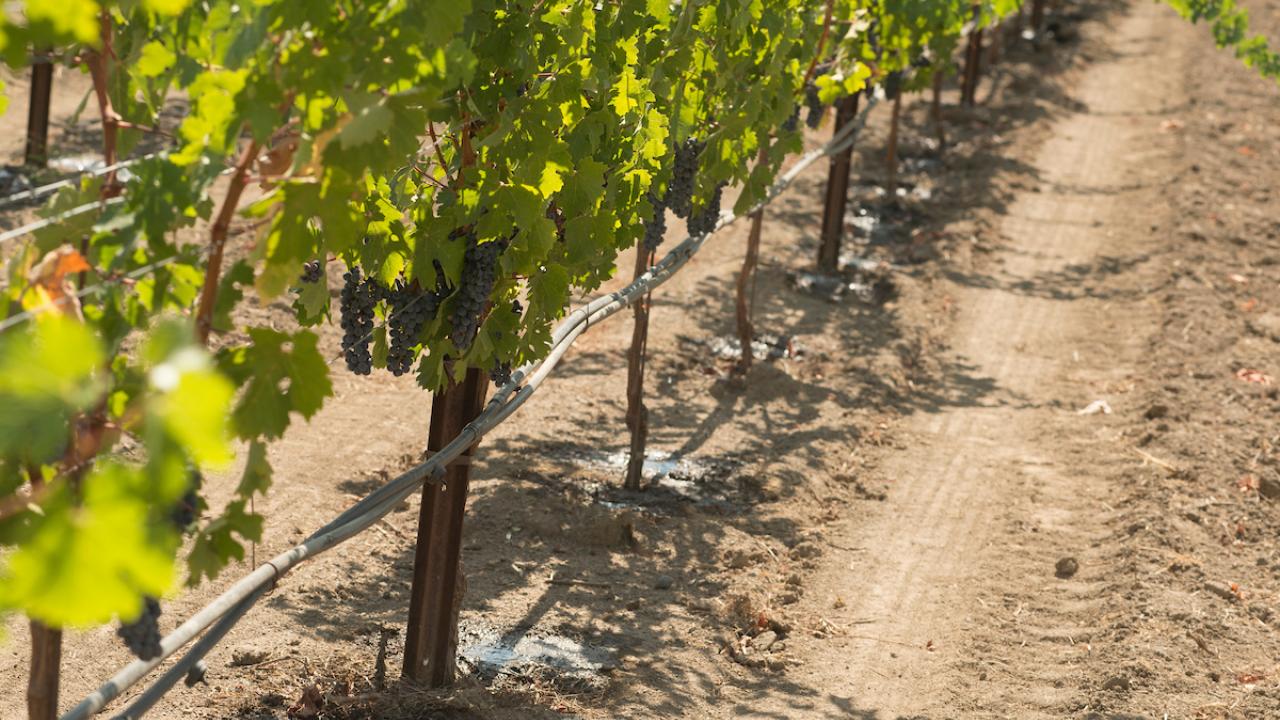As California faces more frequent and severe droughts, agriculture, which relies on irrigation from surface water and groundwater, could become expensive and unsustainable. Researchers at the University of California, Davis, looked at using a “free” resource — rain water stored in the soil — and found that optimizing its use could go a long way to help meet demand for five California perennial crops. Their findings appear in the journal Environmental Research Letters.
“The study highlights a climate-smart opportunity to make better use of the rain that does fall,” said lead author Scott Devine, a postdoctoral researcher in the Department of Land, Air and Water Resources.
The study examined different water management scenarios for alfalfa, almonds, grapes, pistachios and walnuts. It found that water can be saved by delaying the first irrigation of the season to allow the crops’ roots to soak up more of the rainfall already stored in the soil. Devine said irrigating less frequently but more deeply also reduces water loss from evaporation, by allowing the soil surface to dry out.
In a 13-year irrigation management simulation based on climate data from 2003 to 2018, the study showed that these techniques could save enough water to fill California’s largest reservoir, Shasta Lake, more than six times.
Potential trade-offs
The magnitude of the water savings will vary depending on location, soil characteristics and climate. In some cases, irrigating less frequently could affect yield, and that yield loss needs to be considered relative to the value of water savings.
“This strategy may not work in some areas of the state where frequent irrigations are needed to keep salts from accumulating in the root zones,” said co-author Toby O’Geen, a professor and soil resource cooperative extension specialist in the Department of Land, Air, and Water Resources.
Researchers envision these strategies as a first step to managing limited water supplies in the future if droughts become longer and more frequent. O’Geen said exploring ways to encourage deeper roots for perennial crops is needed to efficiently capture more deep soil water storage.
The study was supported by funding from the National Science Foundation Climate Change, Water, and Society Integrated Graduate Education and Research Traineeship program.
Media Resources
Amy Quinton, News and Media Relations, 530-752-9843, amquinton@ucdavis.edu
